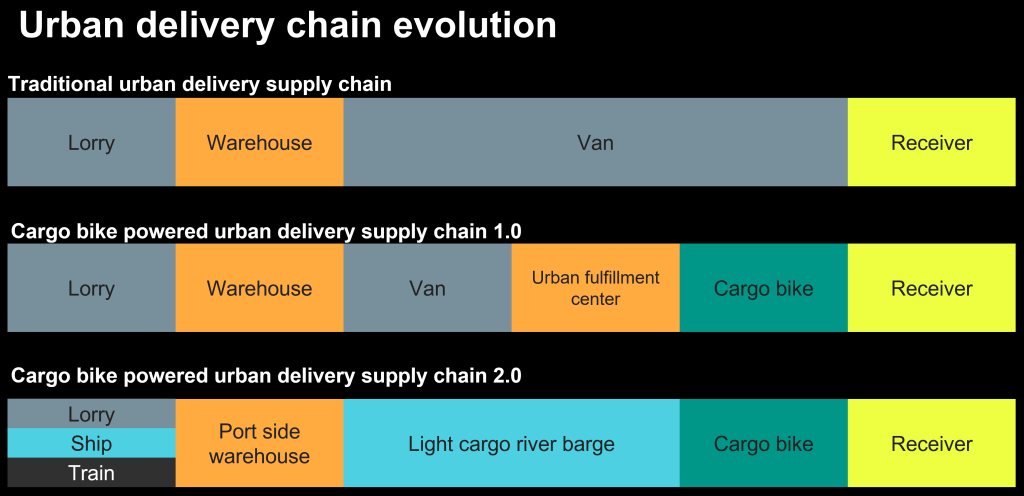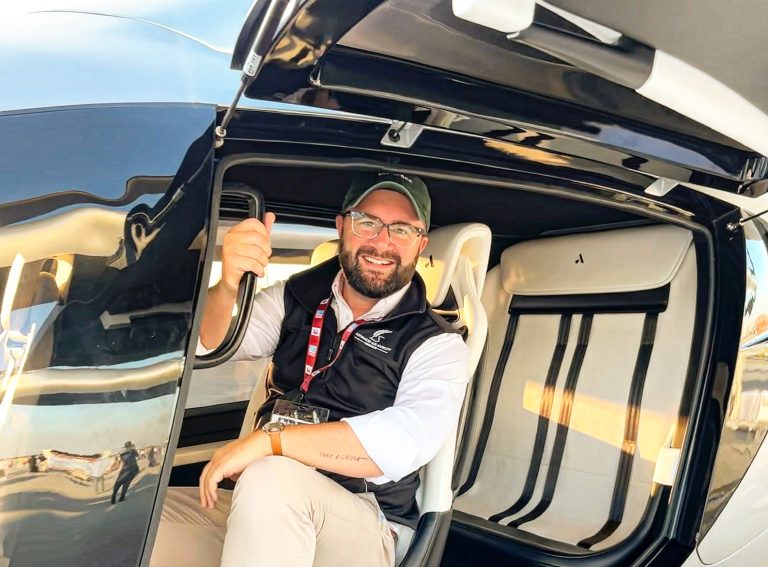Cargo bikes are becoming a norm in London, enabling last mile delivery without emissions, while taking vans off the road. Sustainable logistics provider Delivery Mates alone delivered 2.5 million parcels by cargo bike in London last year, saving an estimated 130 tons of CO2 and 300,000 van miles.
To expand these positive effects, scalable solutions are required for delivering goods into the city centre before cargo bikes complete the last mile.
One solution put forward by urban mobility and maritime expert Bjørn Utgård – who is working with Delivery Mates and other stakeholders along the Thames – is to use electric water shuttles to carry cargo into the city centre.
Replacing lorries with water shuttles
“Instead of using lorries we can use water shuttles that stop at multiple points along the river. Cargo bikes can do the last mile and then return to the pier,” Bjørn tells Zag Daily.
“Unlike London’s congested roads, the River Thames enables timely delivery of parcels into the city centre, negating the need for buffering at micro hubs in the city centre.”
The impact quickly adds up with one vessel replacing four lorries and serving up to 70 cargo bikes in one go.
“It’s true that a lorry can travel as fast as a vessel. But only if the road is empty,” Bjørn says.
“And when are city roads ever empty?”
Electric water shuttles
Key to replacing trucks with vessels is to use battery electric propulsion powered by renewable energy. More than 100 battery electric ferries and work boats are already in operation in Norway, and internationally the electric vessel offering is rapidly growing.
“Battery-electric vessels are already the standard in Norway. If they work in the harsh North Sea, they can certainly work on the Thames as well,” Bjørn says.
“Electric vessels work particularly well in operations where the vessels return to the same point multiple times during the day. Charging the batteries while loading up goods at the fulfilment centre allows us to reduce the required battery size, which both improves efficiency and reduces cost.”
The vessel batteries are dimensioned to only require charging while loading goods at the logistics centre downriver, meaning it doesn’t need to stop only for the sake of charging.
“If you can charge when you dock then you can essentially replenish what you’ve used getting to the place that you’re docking at.”
A smart fleet
Another benefit stems from using a fleet of smaller vessels, creating a more flexible and nimble solution than relying on large ships or barges. Larger vessels use more energy and so to replenish them in a short time requires a lot of power which is difficult to achieve on shore.
“By having a fleet of smaller vessels, we can run them more frequently and directly to more places, reducing overall delivery time,” Bjørn says.
There are also economic and scalability advantages.
“Smaller vessels require lighter and cheaper docking infrastructure. It is also easier to start small and scale up as demand grows, since each vessel is cheaper.”

An open, sustainable solution for London
Delivery Mates has already experimented with using vessels in combination with cargo bikes on the Thames, providing proof of concept.
Bjørn is hoping to leverage this experience to begin commercial logistics operations on the Thames in 2025.
“If we can deliver parcels into the city centre without trucks or vans, we can create a more environmentally friendly and effective supply chain,” Bjørn says.
Scaling the solution in London could reduce more than 20,000 tons of CO2 and 50 million van miles per year, according to Bjørn’s analysis. Core to achieving this scale is to make the solution open to all inner-city logistics operators.
“We want the service to provide an open logistics solution for all logistics operators that need to get parcels into the city centre,” he says.
Global potential
Reflecting on cities across time Bjørn brings to light that the 20th century saw cities built on water. Roads then came to serve trucks and vans and industrialisation rapidly progressed. With its benefits also comes congestion, carbon emissions and long waiting times for building completion.
“Our vision is to alleviate the terrestrial land-based transport by using the waterways of cities,” Bjørn says.
“If you look on a map, most cities are on the river.”
Indeed, what starts in London certainly won’t stop there. Bjørn envisions international expansion of the solution.
“We want to not only show that urban logistics can be made zero emission without requiring space on land, but that also waterways require a multimodal philosophy that considers logistics, accessibility and mobility.”





